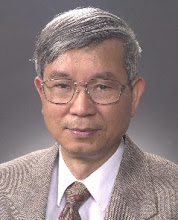I do not think one has to be independent from X, Y, Z, like Formosa from China. In fact China occupied “Taiwan” illegally immediately after the World War II since at that time Formosa and Formosan future are as yet to be determined in the SFPT. The muddy situation is in fact created single-handedly by the USMG (or even by the USA.) (“Formosa Betrayed” by George Kerr, 1947.)
I strongly oppose the use of “Taiwan” and “Taiwanese.” Historically, the Island’s name Formosa and the indigenous inhabitants Formosans is not only known more broadly and internationally and for a distantly longer time (since mid 16th Century —or mid-1500) to the world communities, but also consistent with the law of nomenclatures and priority. Beside, the name by itself is not only beautiful but also historically correct. Here is why:
The island under the name Formosa appeared first on the world map in the mid 16th Century and about a decade after the well versed legend “Ilha Formosa” is told. Both incidents came out in the Portuguese hands and the legend was scripted by the Dutch hired to be on board for recording on a Portuguese ship on the trading mission to Japan.
Decades later in 1593 (from the mid-1500), Japanese “Shogun” Toyotomi (æ² b G‹g) send the delegate twice in the same year and addressed to the Island first the king (or ruler) of the “Takasago” country and next as “Takayama” country demanding offerings from the “King or Ruler” of the Island in exchange for the protection of the Island from being invaded by rising foreign powers. Toyotomi failed in gaining the tributary since the delegates could not find a proper figure(s) to represent the island. The Island is still in a band-forming system of the society development in the culture history.
The Chinese Chen Ti (’‘æ) visited the island in 1602 and wrote to the then emperor of Ming Dynasty a report on the visiting an Island called East Barbaric land. This is what the Chinese do best in her “5000-year?” history we know; in this respect, they call any of hundreds of islands along the entire China East shoreline off East. (Note that Chinese call any of islands including Japan, Ryukyu archipelago, the Philippines, and further south.)
The Dutch landed on the Island in 1623 and in early 1624 declared Formosa being their colonial island (VOC, 1602-1795). The name Formosa is officially written as such in the world map since mid 1500s. The name is valid today, too. This clearly indicates the legitimate name internationally for the Island in the world history is Formosa.
In 1662, Chinese Koxinga (Cheng Ch’eng-kung) chased the Dutch out of Formosa [for detail, one must refer to James W. Davidson (US Council to Formosa), “The Island of Formosa” published in 1903 or in the future edition of the last of 6-volume of “The Formosan Encounter” by Dutch scholars], occupied the Island, and change the name at first to “Dong-tu” and then “Dong-lin” later, but never used the name “Taiwan.”
One of the reasons to avoid the word “Taiwan” is because of superstitious Chinese do not like how it sounds, which is clearly explained by our great native linguist Dr. Iok-teh Ong (‰¤ˆçúº): He says “Tai-Wan sounds like Bury-All” in Holo that most Hans come to “Taiwan” either as the Summer hard laborers (Ro-han -ka) in the Dutch ships or in early days as smuggled into as immigrants resent to be buried entirely in the strange land. It is such a comical that “Taiwanese” continue to stick their guns to hang onto that omen-ridden name as a matter of fact. No wonder their fate continues to be in limbo despite being insulted, ridiculed, and massacred right from the beginning in 1945 when impotent and escaping China armies shipped to “Taiwan” entirely in USMG vessels.
Then, Manchuria Ch’in drove the fellow Chinese Koxinga clans out of the island in 1683 and sometimes after the year, they called the island “Taiwan.” If one claims intelligentsia, the Island remains being called Formosa internationally all through the Ch’in era when the Island is ceded to Japanese unconditionally in 1895 (cf. James W. Davidson, 1903).
The written Formosan History begins in 1623 immediately after the Dutch landed on the Island. At that time, there is only a handful of Chinese (<1000-2000) on the island as the inhabitants told and so noticed by the Dutch. Most Chinese, however, are merchants and/or illegal pirates doing unlawful bartering with the indigenes and stayed temporarily resided with Formosan host-masters (“The Formosan Encounter” edited from VOC.)
Last but not the least, all those names written in Shi Ben (Žj–¾˜V æ ¶) book, “400-year Taiwanese History” derived from combinations of Han words like ‘å,às,‘ä,ˆõ and others sounding like “Tai and Wan” that allegedly appear in China history are at best speculative, if not conjectured, and the true sources often conveniently unavailable today. One last note is the fact that “Taiwan” is a word “Tayouan” in the Dutch spelling system that Dutch colonists heard directly from the local indigenes and accordingly only pointing to the An-ping area or in the present day Tainan as also pointed out in Davidson’s book.
Please, please, read George Kerr’s “Formosa Betrayed.” It is now available free in PDF at: http://homepage.usask.ca/~llr130/taiwanlibrary/kerr/kerr.pdf . He has used the words to distinguish Formosa from “Taiwan” meticulously correct throughout the entire book. Formosans know it and can palpate the essence of its use properly. It is the time now for “Taiwanese” to realize the importance in using Formosa/Formosans instead “Taiwan”/ “Taiwanese” properly deep from their consciousness: Formosans are not Chinese and the Chinese creation of the word “Taiwanese,” which can easily being changes to despicable word like “China Taipei” and backward “Taiwan” both by Chinese absurdly!
Jim Cheng. 100907
Tuesday, September 7, 2010
Subscribe to:
Posts (Atom)
